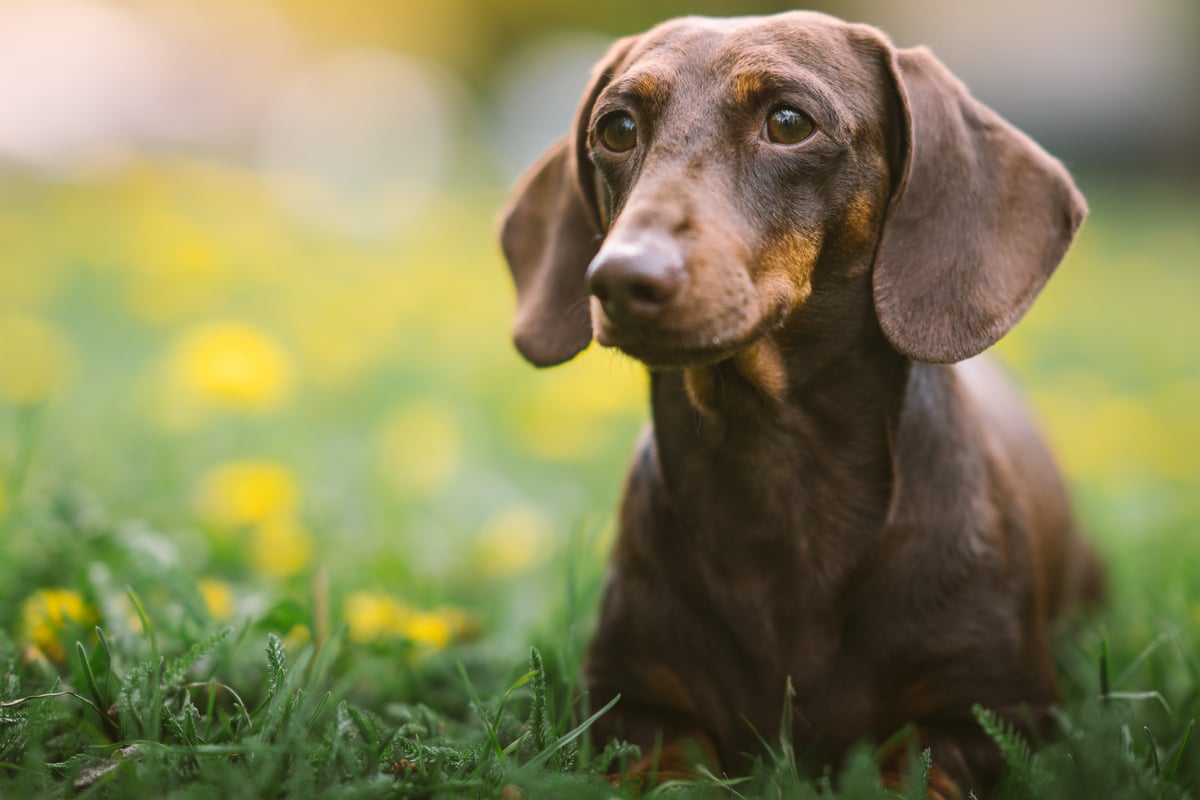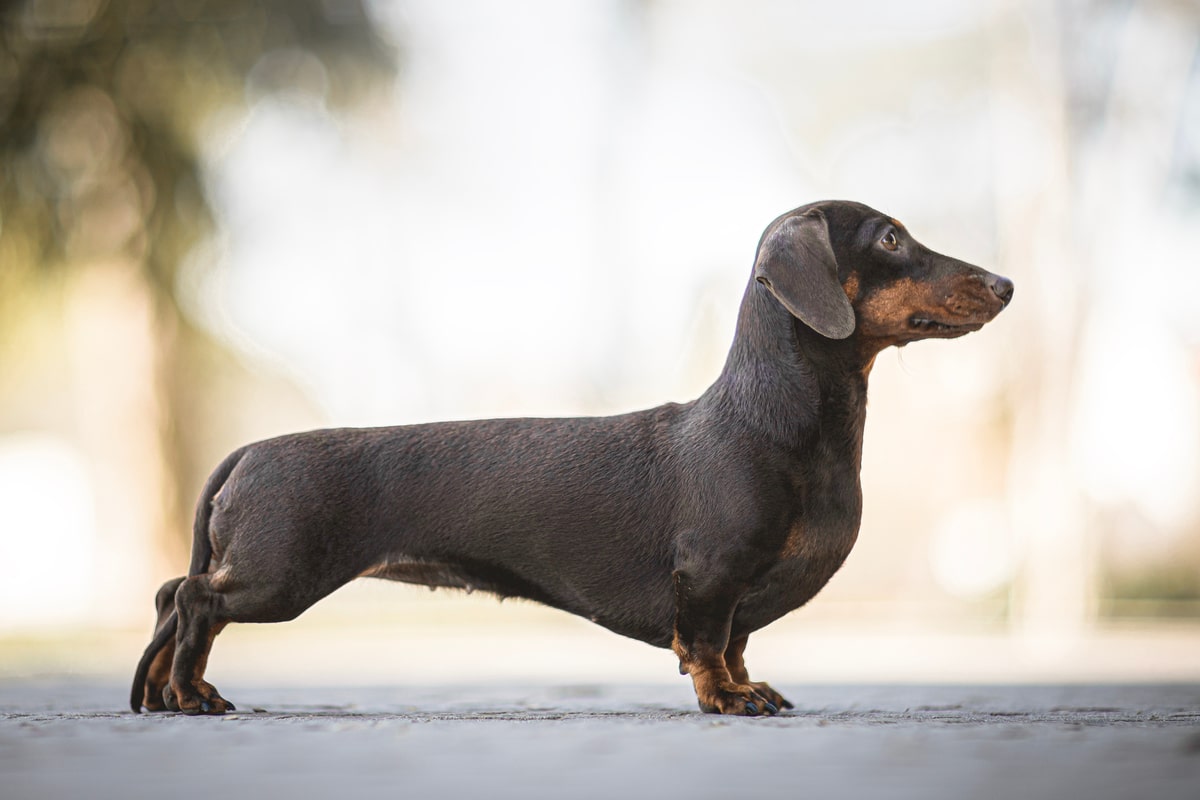Anyone that has spent any time with a Dachshund will tell you they are lively, curious, energetic little balls of mischief that can make you laugh and sigh in frustration at the same time. Their comedic antics will keep you laughing, but their intelligence and curiosity can get them into trouble when they raid your cabinets or tip over the trash can.
They love small toys that squeak, grunt, or chirp and will spend hours trying to rip them apart. This is plenty of fun for the doxie, but can be frustrating for you when you’re cleaning up little bits of stuffing from all over the room.
Dachshunds are very adaptable dogs, which means they can adjust to a wide range of living conditions. They do exceptionally well in larger homes where they have some room to romp around, but can also fit perfectly well into small apartments as long as they are given daily walks.
Their overall temperament should be lively, entertaining, curious, and energetic. If you are selecting your puppy from the litter, keep an eye out for those traits. Doxie puppies that are acting shy or timid are not a typical personality trait of the breed and may be showing signs of stress or anxiety instead.
When broken down into their coat types, many people find their longhair Dachshunds to be the much calmer and more laid back type of the three. The wirehaired type have terrier in their genetic background so can be full of mischief and energy. The most common coat type of the smooth is said to be an equal mix of both, with a little bit of mischief and energy and an equal measure of calmness when relaxing at home with their humans.
While Dachshunds have loads of energy, it comes in bursts. For some of the time, they can seem like very lazy dogs. However, since obesity can cause spinal issues, it’s important that you encourage your doxie to remain active and playful as often as possible to keep them at a healthy weight.
Aggression Levels
Dachshunds are not aggressive by nature, but can be very much a “one person dog.” This means, if the doxie chooses you as his number one human, he can be somewhat reluctant to give affection to someone else.
This may manifest in nipping at someone who wants to shake your hand or hug you, barking at someone talking to you or coming close to you, or other inappropriate behaviours. It’s important that you teach your doxie limits from an early age. Proper socialization can be done with puppy classes or simply showing the Dachshund that you aren’t going to be abducted by someone coming in for a hug or handshake.
Preventing Boredom
Due to their intelligence, Dachshunds can get bored easily if not given enough mental stimulation. Durable toys, brain-teaser treat toys, and interaction from you can all help relieve boredom.
When a doxie gets bored, its behaviours can change and become destructive. Digging is one of the ways they will use to relieve boredom which can be disastrous in your backyard but can also ruin carpeting and couch cushions indoors too.
If you need to leave your Dachshund unattended while you work or attend school, it’s important to ensure your home is puppy-proof and secure. A bored doxie can get into all kinds of trouble in the cabinets and pantry if he has access.
Being Around Children
When introduced properly and early on, Dachshunds can be a very good playmate for children, however, they may not be as fond of your child’s friends that visit on occasion. Dachshunds build strong relationships with their close family but will shun outsiders entirely.
When a doxie and children share the same home, be sure your children know how to properly play with the dog. Since they have long backs and short legs, they can be injured if play gets too rough or if a child is holding the dog and drops it.
Always supervise the interactions between your children and your doxie to ensure both sides enjoy the experience.
Being Around Other Pets
Since Dachshunds were bred for hunting, they can show some behaviours that you might not want around other pets. For example, doxie’s history has them specifically chasing badgers, weasels, rabbits, and foxes.
If you have a pet ferret, hedgehog, rabbit, guinea pig, or other small mammals, your Dachshund may attempt to show hunting behaviour towards this pet. It’s very important that your new doxie is introduced to other pets in the family from an early age and is taught to tolerate their presence as a member of the pack.



